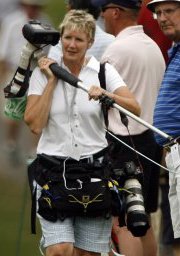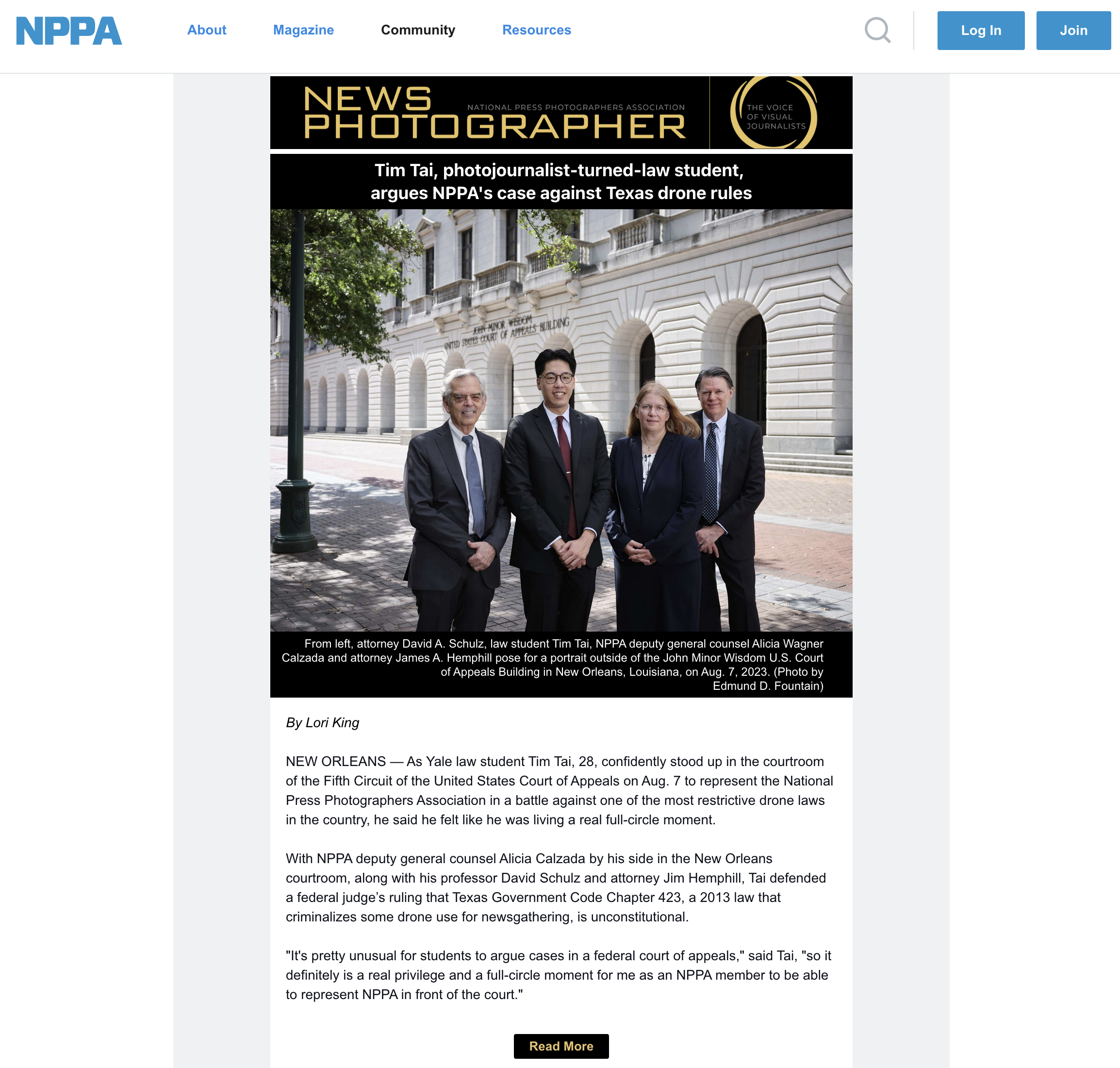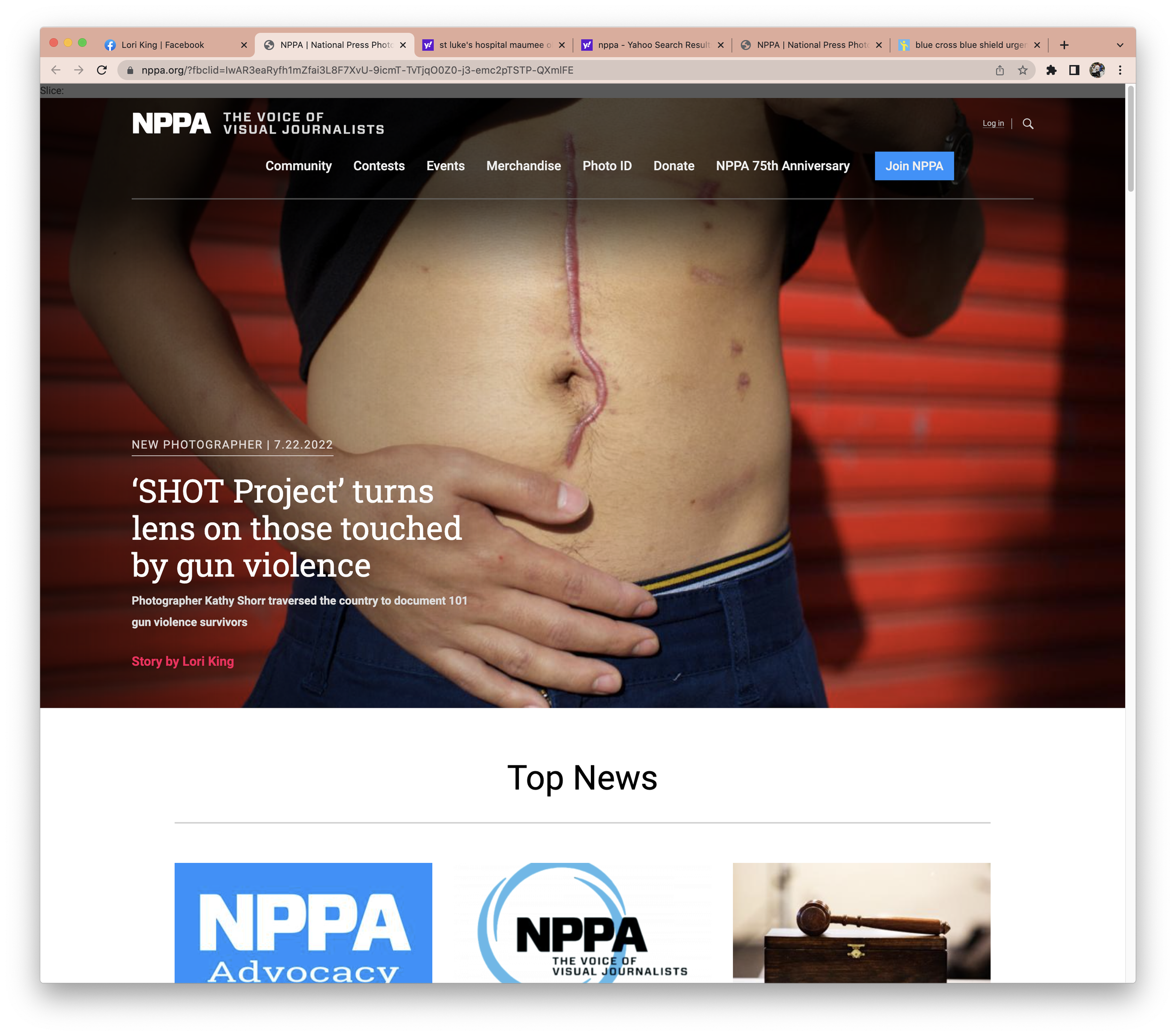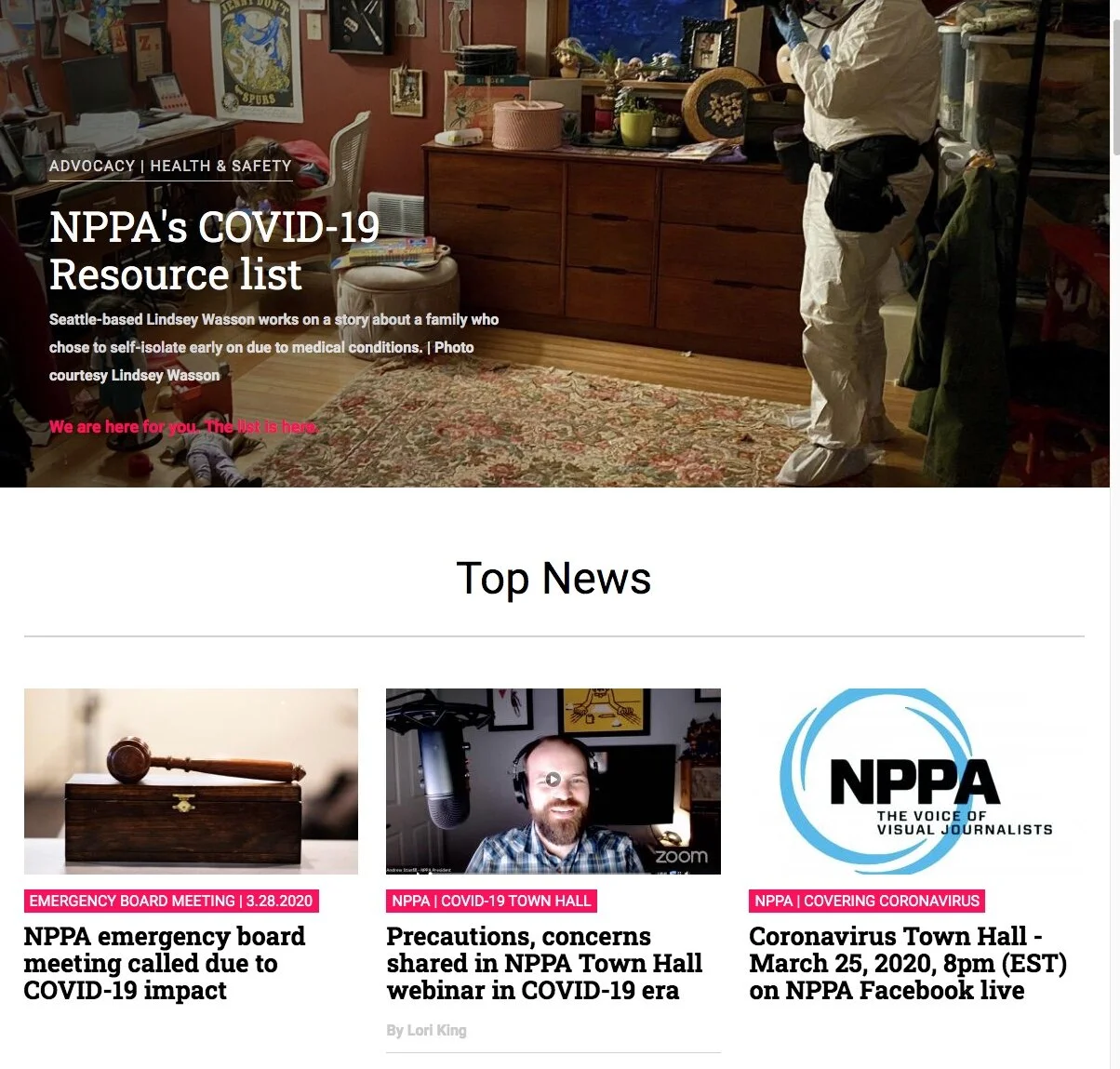The written word: Stories I wrote for the National Press Photographer’s trade magazine, News Photographer.
Scroll down to view the stories and click on the links to read the full story.
April 2024
Headline: George Rose’s Photography captures California’s growing water woes
Book Review and Visual Voice Podcast by Lori King
Lede Sentence:
April 2024 – At first glance at the front and back cover photographs of this coffee table book, it struck me that we humans swarming the planet resemble gnats that just won’t go away, no matter how hard we try to swat them.
Both covers feature Lake Oroville, but the front image was taken in 2021. Despite the extremely low water level in the lake due to a heat wave that swept through California a year earlier, hundreds of boats are still jammed into a shrinking water space as far as the eye can see. The back image is the same lake but made two years later when it was 100% full due to a series of “atmospheric river” storms. The number of boats appears to be similar.
This 9-by-12 horizontal hard-bound book exemplifies the dichotomy of beauty and destruction. George Rose does a wonderful and thorough job of documenting the exquisiteness of a very diverse ecosystem and how humans negatively impact that system due to our urban and rural sprawl, consequently causing global warming. He visually demonstrates how humanity is leaving its mark, and he did it without showing people in most of the photos.
Screen shot of NPPA Online Book Review
February 2024
Headline: Q&A: ‘The Clips’ contest co-chairs Sean Elliot and Pu Ying Huang map out 2024 contest and beyond
Story by Lori King
Lede Sentence:
They say a great picture is worth a thousand words, but in the NPPA, it’s worth 50 points!
That’s right … if you enter the NPPA’s Regional Monthly Still Photojournalism Competition every month, you can earn points for placing in first, second or third, and those points can add up to more than a thousand if you’re consistent in your greatness.
The contest, recently rebranded as The Clips, was created in 1964 when newspaper photojournalists snail-mailed physical cutout ‘clips’ to the NPPA headquarters for the monthly and regional contests.
According to the NPPA 2023 Internal Report for The Clips, a lot has changed for the contest in nearly 60 years (shrinking staff positions, a rise in freelancers, moving from paper clips to digital format). Team leaders are responding with a renewed focus on timely month-to-month postings, as well as putting to test a full year of team dynamics, contest tools and production workflow.
Link to full story
Screenshot of Magazine Feature
August 2023
Headline: Tim Tai, photojournalist-turned-law-student, argues NPPA’s case against Texas drone rules
Story by Lori King
Lede Sentence:
NEW ORLEANS -- As Yale law student Tim Tai, 28, confidently stood up in the courtroom of the Fifth Circuit of United States Court of Appeals on Aug. 8 to represent NPPA in a battle against one of the most restrictive drone laws in the country, he said he felt like he was living a real full-circle moment.
With NPPA deputy general counsel Alicia Calzada by his side in the New Orleans courtroom, along with his professor David Schulz and attorney Jim Hemphill, Tai defended a federal judge’s ruling that Texas Government Code Chapter 423, a 2013 law that criminalizes some drone use for newsgathering, is unconstitutional.
The case began in 2019, when NPPA, the Texas Press Association and Joseph Pappalardo filed a lawsuit in Austin, Texas, arguing that portions of Ch. 423 violate the First Amendment. NPPA also argued that the drone laws are preempted by federal aviation regulations. In 2022, District Judge Robert Pitman overturned the Texas’ stringent drone restrictions, holding that it was an unconstitutional violation of the First Amendment.
However, the Texas attorney general, representing the state agencies that were sued, has appealed the victory, and it was Tai who presented the oral arguments during appeal.
Tai’s involvement in the case began just a year ago. As a current member of Yale’s Media Freedom and Information Clinic, he started working on the appeal portion of case, and was chosen by the attorneys and clients to argue it. He had also just earned his Part 107 license.
Tai first realized his propensity for media law in 2014 while covering the Michael Brown protest in Ferguson, MO. Tai, a Mizzou photojournalism junior at the time, witnessed police officers threatening, targeting and unjustly arresting dozens of journalists “for all sorts of ridiculous things.”
Link to full story
Screenshot of Magazine Feature
July 2022
Headline: “SHOT’ Project’ turns lens on those touched by gun violence
Story by Lori King
Lede Sentence:
When New York City photographer Kathy Shorr traversed the country to document 101 gun violence survivors for her 2017 book, “SHOT: 101 Survivors of Gun Violence in America,” she had no idea the project would lead to an ongoing commitment to put a face to gun violence.
Not only did Shorr expand her “SHOT” project in 2019, forming a nonprofit called SHOT: We the People, a multimedia platform where users can interact and share their stories about gun violence in America, she also took on a project called “SHOT: We the Mothers.”
The “Mothers” project includes 51 portraits of mothers who have lost children to gun violence in the Philadelphia area. Shorr photographed the mothers at places that had special meaning to their children, as well as mementos that belonged to the children.
Link to full story
Screen grab of NPPA website featuring the SHOT Project story.
March 2020
Headline: Precautions, concerns shared in first NPPA Town Hall webinar on working in the coronavirus era
Story by Lori King
Lede Sentence:
Taped to the employee entrance door at the Toledo Blade newspaper is a health advisory that demands we must take our temperature prior to coming to work. Anyone who has a fever of 100.4 or higher must not enter the facility.
We are also encouraged to wash our hands often, don’t touch our faces, maintain social distancing, wipe down our gear with disinfectant, and isolate ourselves if feeling ill.
These COVID-19 precautions are a new normal that photojournalists not only should abide by, but document. But how do we stay safe while covering a fast-spreading, potentially deadly virus?
This concern, along with other critical issues facing visual journalists during this pandemic, was discussed during an NPPA Town Hall webinar on Facebook Live on March 22. The Zoom broadcast was open to NPPA and non-NPPA members and can viewed on the NPPA Facebook page.
NPPA president Andrew Stanfill kicked off the Town Hall by describing the Coronavirus as the biggest challenge facing our industry in quite a long time.
“It’s something that’s hitting us like the recession, and at the same time as being concerned about our people’s health, and how we cover this thing and make sure everyone’s safe while they are out there working,” Stanfill said.
Link to full story
Screen grab of the Town Hall article on the NPPA website cover page.
Jan/Feb 2019
Story: Photojournalists from the Pittsburgh Post-Gazette, Capital Gazette and the Thousand Oaks Acorn handle gun violence in their communities
Story by Lori King
Headline: Gun violence is changing how we handle ourselves
Lede Sentence:
Columbine. Virginia Tech. Sandy Hook. An Aurora, Colorado, movie theater. Pulse nightclub. Marjory Stoneman Douglas High School. The Las Vegas outdoor concert. Tree of Life synagogue. Borderline Bar & Grill.
These places have become synonymous with mass shootings, and visual journalists were at all of them to capture compelling images of armed police, screaming victims and grieving mourners for all the world to see.
The dangerous and graphic nature of covering these types of disasters can wreak emotional havoc on journalists; that has been known for decades. But the fact that shootings and deadly wildfires are happening at such an alarming frequency is why they’re sparking a national conversation about mental health and physical safety of journalists and newsrooms.
Link to Story
July/Aug 2018
Story: KARE photojournalist Chad Nelson and reporter Boyd Huppert win POY and ROY, again
Cover Story by Lori King
Headline: KARE's Chad Nelson Repeats as News Photographer of the Year
Lede Sentence:
Partway through his tape that won him the 2018 Ernie Crisp Photographer of the Year award, Chad Nelson presents “Gnome Sweet Gnome,” a story shot and edited so masterfully that it defies a simple explanation of how he did it.
This heartwarming feature tells the tale of a Minnesota artist whose favorite “hand-painted, red-cheeked, guest-welcoming” garden gnome artwork was stolen from her front yard Christmas display 40 years ago and then discovered in 2017 outside a record shop.
The story could have been spun traditionally, with straight cuts and a single camera, but not in the magical hands of Nelson, a KARE 11 News photojournalist in Minneapolis who spent a full day shooting the video and then an additional 26 hours editing. He used sliding cameras, animation and motion tracking software and experimented with filters, color correction and pencil sketching to make some frames look like paintings.
Link to full story and his gnome video
May/June 2018
Story: The Cincinnati Enquirer wins the Pulitzer for Local Reporting
Cover Story and podcast of the entire interview by Lori King
Headline: The everyday horror of heroin overdoses
Lede Sentence:
A heroin overdose can happen in libraries, in restaurant bathrooms and in moving cars as unconscious drivers travel on the expressway. Heroin overdoses occur in public places and private residences, sometimes in your neighborhood.
Heroin overdoses happen everywhere people are.
This is the devastating, never-ending story of heroin addiction throughout America that The Cincinnati Enquirer wanted to tell.
So during the week of July 10-16, 2017, the newspaper dispatched 60 reporters and visual journalists to document how the opioid crisis had its grip on its community.
It called the project “Seven Days of Heroin: This Is What an Epidemic Looks Like.” This year, this massive effort shedding light on the epidemic earned the staff of the Enquirer the 2018 Pulitzer Prize for Local Reporting.
Link to full story and Podcast
Jan/Feb 2018
Story: The photo staff at the Indianapolis Star cover the Larry Nassar trial
Story by Lori King
Headline: Ex-gymnast’s tip leads to emotional story
Lede Sentence:
When a former gymnast emailed a tip to the Indianapolis Star that USA Gymnastics and Michigan State University doctor Larry Nassar had molested her when she was 15, the newspaper listened.
It only took a few hours for Rachael Denhollander to muster enough courage to send the tip after reading the Star’s investigative piece “Out of Balance.” The series detailed how USAG ignored sexual abuse allegations, allowing coaches to bounce around the country from gym to gym, ultimately escaping prosecution.“In some cases, they stayed in the good graces on the USA Gymnastics coaches list. Some were discovered and banned, and some weren’t,” said the Star’s Robert Scheer, the embedded photojournalist on the project.As part of the series, Scheer traveled to Rhode Island, St. Louis, Florida, Tennessee, Georgia, Kentucky and Ohio to follow leads and complaints.
Link to full story and Indianapolis photos
Jan/Feb 2017
Story: Detroit Free Press photojournalist and Flint resident Ryan Garza covers the Flint water crisis
Cover Story by Lori King
Headline: Hometown Story: Documenting the Flint Water Crisis
Lede Sentence:
Rumors circulated in 2011 that leaders in Flint, Michigan, were looking at the Flint River as a potential water source.
Growing up in the city, Ryan Garza knew what had gone into that river, and it frightened him that people were considering it for drinking.
“Thoughts of that being a reality didn’t sit well with people, including myself,” said Garza, then a photojournalist with the Flint Journal.
By the time the contaminated river water was flowing through the city’s corroding copper pipes, Garza had left the Flint Journal and was working at the Detroit Free Press. But because he still lived in Flint, commuting over 50 miles to work each way, he was living the nightmare that was making national news.
Only when enough science supported the mounting claims of lead and trihalomethanes (TTHM) poisoning, as well as Legionnaires’ disease, did Garza pitch his idea to Free Press editors to cover the water crisis from his own backyard. Photo/video director Kathy Kieliszewski understood the astounding impact the Flint water crisis was having on the community and on her own photographer, so she backed Garza’s request to immerse himself into the story.
Link to full story
Jan/Feb 2017
Story: Detroit Free Press photojournalists make documentaries for the FREEP Film Festival
Story by Lori King
Headline: Making Films in Detroit
Lede Sentence:
Her Sony HVR camera stood on a tripod in the center of the room as Detroit Free Press photojournalist Mandi Wright prepared to cover a news conference. A lesbian couple from Hazel Park, Michigan, were announcing that they were filing a federal lawsuit to overturn a state law that prevented them from mutually adopting their five children.
Wright and Free Press reporter David Ashenfelter were the only media there. So they covered the news conference, and Wright recorded an emotional video of April DeBoer and Jayne Rowse explaining their case and their family.
That video in 2012 began a long-term project that became “Accidental Activists,” a 79-minute documentary that captures the drama of a single court case that challenged and defeated all gay marriage bans in America. In June 2015, the Supreme Court struck down such bans, allowing same-sex marriage in all 50 states.
The movie is both polished and gritty and mostly a mixture of DSLR and iPhone stills and video footage. It shows what still photographers can do when they have a solid story and the support of an editor who encourages strong visual storytelling.





